Table of Contents
Learning about Crafts
If you look around your home, you will find a number of things used everyday that represent the heritage of Indian crafts. These may include:
♦ an embroidered cushion or pillow case
♦ a bamboo basket or chair woven with cane
♦ a piece of jewellery
♦ a duree or carpet
♦ a stone bowl
♦ a clay pitcher or surahee, or a lamp or diya
♦ a mat or a broom
♦ a handwoven saree
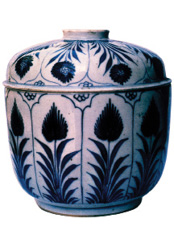
It is quite possible that one or more objects in this list have been replaced in your home by an industrial product. If that has happened, you can ask your parents about what they used before the modern object arrived.
On the face of it, a broom or a mat, a shawl or a handwoven scarf may appear machine-made. On the other hand, you can find nylon mats in the market made mechanically, which look exactly like hand-woven straw mats. Unless you observe carefully you may not see much difference between the two. However, there is only superficial similarity between an object made by a craftsperson, and its copy made by a machine. When people talk about craftsmanship, they often have in mind machine-made perfection. However, the kind of perfection a work of craftsmanship represents is quite different from the mechanical perfection of a mass-produced object.
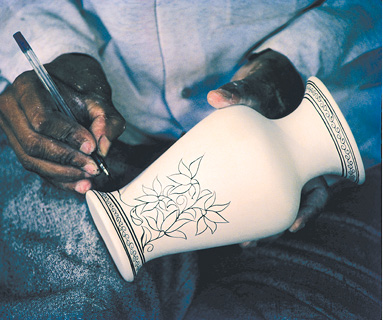
The difference comes from the traces of individuality that you can find in a hand-crafted object. These traces may look like marks of ‘imperfection’ in comparison to the mechanically produced object. For instance, in a handmade bamboo fan, the surface may be rough in the part where the bamboo had a knot. The natural texture of the bamboo continues to ‘live’ in a handmade fan. In a comparable plastic copy of the fan, the surface will be smooth everywhere, and every fan will look identical. Contrary to this uniformity, each craft product is different even if it looks similar to others. A hand-woven sari has no exact match, just as a handkerchief you make with your own hands is unique.
All traditional crafts are practised in communities, not individually. The man or woman who practises a traditional craft inherits it from senior members of the community, usually while growing up in the family. The knowledge and skills involved in any craft are diverse, starting from basic knowledge about the material with which the craft is practised, the tools with which it is made, to the numerous skills applied in order to transform the material into a work of aesthetic beauty and of daily use.
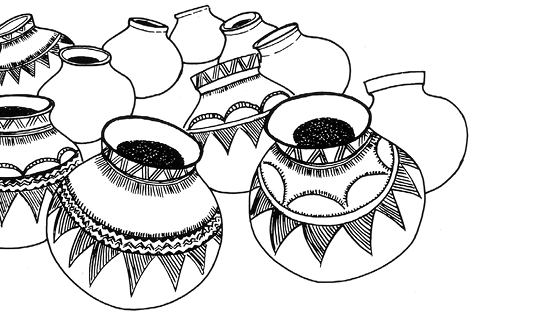
Let us, for example, look at a pitcher or a flower-pot. The material used for making it is the most basic and perhaps the oldest resource used for the practice of pottery as a craft. The right kind of clay is first collected, then cleaned and treated, and then turned into pots of desired shapes with the help of a potter’s wheel. Once a pitcher is given shape, it is fired in a kiln in order to make it strong. In each of these stages, numerous skills are involved. The potter must also maintain several levels of awareness while applying his skill, in order to ensure that the end product has its basic, reliable quality and beauty.
Beauty and Use
Aesthetic beauty and usefulness need not be two separate qualities. In modern times we sometimes feel that something to be used in everyday life need not be beautiful, or that something beautiful cannot be put to daily use. We assume that if an object is to be used frequently, it need not be delicate and graceful. This assumption is quite mistaken in the context of traditional crafts. The best way to understand why this is so, is by making something with your own hands.


Try making an object of daily use in your life as a student. If you have no experience of stitching and embroidery, you can still try to make a small book mark, by wrapping a small, rectangular cardboard with a piece of cloth which has a design like a flower or a leaf embroidered on it. In order to make such a bookmark you will need to take several decisions. Each decision will draw your attention in two directions: one, towards the choice of cloth, its colour, the embroidery and its colour; and two, towards your own likes and dislikes in these matters. When you start the actual cutting and stitching, you will go through a series of thoughts and emotions. You will feel pleased with yourself when the rectangular cardboard is wrapped up and stitched tightly with the cloth you have selected. You will feel somewhat irritated with yourself if one of the corners does not look as neat and angular as the other three corners do. Ultimately, when the work is finished and the bookmark is ready, you will feel pleased with yourself in a strange sense.
This is an example which can help you appreciate how craft products combine beauty with use. The imperfect piece of work will look so intimate that you will look at its blemishes, like a blunt corner, with affection. A sense of personal relation with the object in hand will give it, in your eyes, a beauty that more perfect-looking bookmarks made of metal and plastic may not have. The secret lies in the point that a craft product does not pretend to be perfect, it only aspires to be perfect.

This is what makes it so human. As human beings, we too can only aspire to be perfect in whatever we do, but we can never be perfect. Even the Taj, which is a great work of craftsmanship, and is rightly regarded as one of the wonders of the world, is not perfect. If you visit the Taj and look at it carefully, you will find that it expresses a deep aspiration to be perfect, even as it reveals many examples where the individual sculptor has left his own mark which prevents the overall design from looking purely mechanical. The reason why craftwork is so satisfying may well be because it represents a deep urge in us to reach higher and higher levels of perfection. What does the word ‘perfection’ mean? Before we enter the world of different craft forms discussed in this book, let us think about the meaning we can give to the word ‘perfection’ in the context of crafts. There are two ways in which we can proceed in this search. One is to reflect on the experience that working on a craft brings to us. The other way is to examine the outcome of our work, and look for aspects of perfection in the product.
The Experience of Craft Work
It is easy to say that the work involved in any craft is mainly of a manual kind, in the sense that craft work is done with the help of physical effort on our part. When we make a small diya of clay or a garland of flowers—mala—our eyes and hands are actively engaged. However, if we look at this kind of work more deeply, we will notice that it is not purely manual. A great deal of mental attention is required at every stage, and at certain points we must concentrate on what we are doing, otherwise the mala we are making may not turn out well. Each flower has to be accommodated in the mala with care and concern for its individual character, size and colour. It must have space, good company, and the needle must pierce it without injury. If we have made a diya many times we may get so good at it that we don’t need to think about it all the time. In other words, we get so ‘skilled’ at this work that our hands and eyes carry on without conscious decisions being made by the mind.
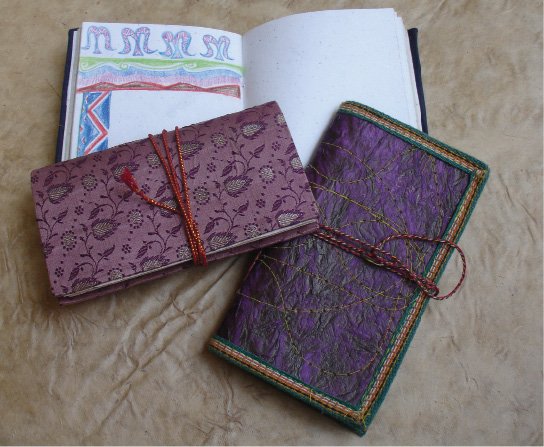
You must have noticed how a tailor can continue to work on his machine while talking. A barber can do the same thing. But even a highly skilled tailor or barber does pay attention to what he is doing if he does not want to make mistakes. Perhaps what happens is that the mind and the body together enter into a rhythm of work. Certain decisions which are of a routine kind get taken without too much thought, hence the person can keep talking while his hands are working; but at certain moments when something crucial is to be done, the mind takes full control and guides the eyes and the hands to focus on the work itself. This remarkable unity of body and mind in craft work is what makes it a pleasant and deeply satisfying experience.
If you have never attempted to learn any kind of traditional craft till now, you might have ignored the two suggestions given earlier in this chapter, i.e., to make a book mark and a mala. You still need a personal taste of making something with your hands in order to get the taste of mind–body experience. So, here is yet another suggestion, for something simpler than the earlier examples.
Try something as simple as making a cover for your textbook. As you start, alert your mind to all the decisions you are going to take, starting with choosing a piece of paper large and strong enough to survive for a few months in your school bag. The kind of paper you choose will have implications not only for the number of months the cover will last—its longevity—but also for the neatness of the folds, the sharpness of the corners, and, of course, for the attraction that any design or picture might have, on the side which will wrap the front cover of the book. If you select a page from an old newspaper to cover your textbook, its size may be convenient, but the neatness of the folds will suffer because the paper used as newsprint is rather thin and tears easily if you fold it along a sharp line. Brown paper used for wrapping or making parcels may be more suitable. Following this decision about the material to be used, you will need to think about the length and width of the piece, depending on how much paper you want to allow inside the cover, when you fold it along the book’s own cover. At the corners, you can choose a simple fold or a somewhat complex fold. This kind of fold, which doubles up the paper not only gives strength to the corners but also looks more attractive when you open the book. Why do corners need greater strength? As a user of textbooks since childhood, you can easily answer this question.

This example should suffice to indicate how many decisions are involved in any manual work if it aspires to achieve as much perfection as possible. You can now appreciate the role that a long and sustained tradition in any specific craft plays. If a craft has lived for a few hundred years, many of the decisions required to practise it will have been taken by several generations of people who lived before us. These decisions have now become the basic knowledge of that craft. We can acquire this knowledge by sitting and working with a practitioner of that craft. Of course, you will still need to apply your mind when doing the craftwork yourself, but at least you will know what to do. By learning the basic knowledge of a craft from someone who knows it, you will become aware of the decisions you will need to take when you start working and also of the small mistakes you will make as you move towards completion. The mistakes will not hurt you the way mistakes in an examination of mathematics or language do. Rather, the mistakes will look like your signature on the product. In this sense, they will make the product a precious memory of your first experience of trying the craft, and the processes of thought and feeling.
Looking at a Craft Product
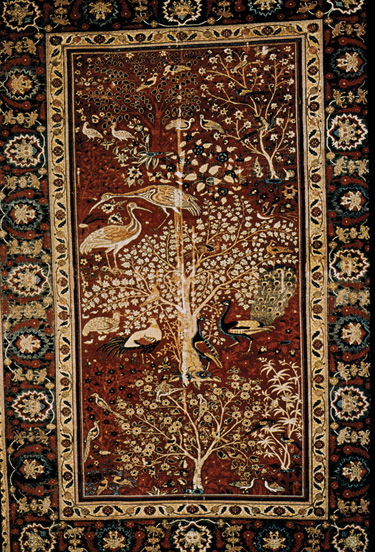
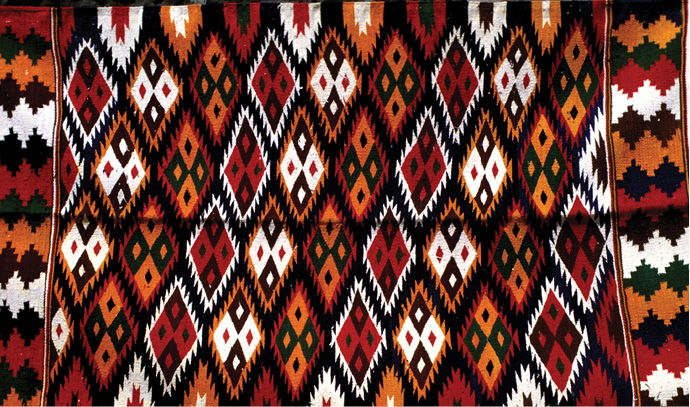
Do think about all the differences between the two modes of production, and the two kinds of products before you move to the next chapter.
1
CRAFTs HERITAGE

India is a combination of many worlds, living in many centuries and cultures. The world of India’s craftspeople spans millennia and spreads across the length and breadth of our land, which is seen in cities and towns, by-lanes and villages. A small crafted object made in an unknown village of India has the capacity of becoming an object displayed in the finest museums of the world, yet the same object is often merely an object of utility for a particular community which never thinks of it as a great art. It is often a lack of knowledge of the variety of cultures, techniques, meanings, uses and relevance of such handcrafted objects that allows us to neglect their beauty and take our cultural heritage for granted.
The Definition of Crafts
Indian words for handicrafts are commonly hastkala, hastshilp, dastkari, karigari, all meaning handiwork, but they also refer to objects made with craftsmanship, i.e., specialised skills of the hands which are also artistic. The aesthetic content is an intrinsic part of such objects and means the object of utility has a value that goes beyond mere usage and is also pleasing to the eye. A handcrafted object is seldom merely decorative, and whether it has no embellishment or is highly decorative, its true purpose is served only when it is both useful and has a fine form.

An artisan drawing before carving on wood
Crafts and Culture
Crafts are therefore closely related to concept of form, pattern, design, usage, and these lead to its total aesthetic quality. When all these aspects are rooted in the culture of the people in a particular area of a country or among certain communities, crafts become a part of its cultural heritage. Handcrafted objects are not just valuable for their aesthetic quality, but as objects produced by traditional craftsmen and women for ceremonial and religious purposes, and most importantly as a means of livelihood.
Cultural and Social Needs for Crafts
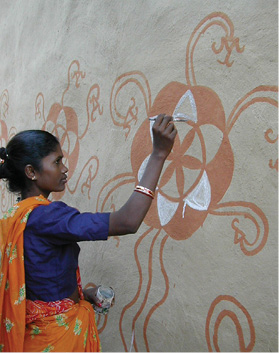
Wall and floor decoration in a house, Jharkhand
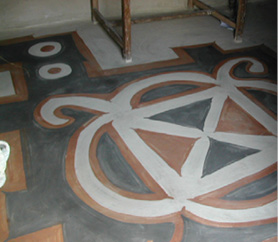
This creative spirit in the midst of the struggle for survival is one of the unique and significant distinguishing features between men and beasts. Why else do the forest communities, even today, lay so much store by painting the inside or outside of their homes, or adorning their bodies with decorative tattoos or ornaments? Why are people affected, and often spiritually guided, by colours? Why does a woman fashion an attractive handle for the broom she uses to clean her home and why does she spend time invoking the blessings of the gods through her painted designs on her kitchen floor?
Crafts through the Ages
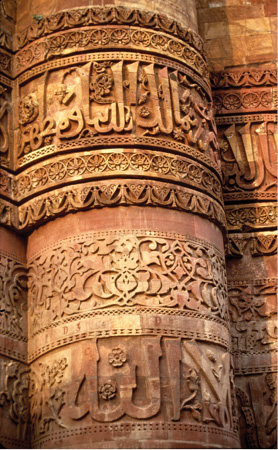
Detail of calligraphy in stone, Qutub Minar, New Delhi
India has been greatly blessed by having a many-layered, culturally diverse, rich heritage of craft skills influenced by historical events combining with local practices and religious beliefs. These influences have come from multiple sources. Changes and enrichment have taken place from trade movements such as those on the Silk Route, which brought demands and resources from the Middle East and Central Asia to the Far East, up to China. The skill of weaving carpets and superior forms of shawls was brought to Kashmir by the pre-Moghul king, Zain-ul-Abedin. Persian artisans enriched carpet-weaving and shawl-making according to the needs of Indian courts. On the other hand, the static nature of the Hindu caste system has kept many craft forms alive merely because the artisan had no opportunity to move away to other professions as social boundaries were rigid and hierarchical. The courts of various maharajas encouraged excellence in many courtly crafts connected with the making of armoury or jewellery. Temples kept alive the finest metal work, stone carving, mural painting and even textile weaving right across India, and particularly in South India. Here the Kammalars who claimed descent from the five divine artisan sons of Lord Visvakarma, followed the Shilpa Shastras, the technical tomes on the practice of art in Sanskrit. The high priests among the artisans follow these rules even today when creating large vessels out of metal alloys for temple use. The element of religiosity in the practice of craft work spans many regions and communities since the practice of their art is seen as a striving for the ideal through the dedication of their skill to the gods. It is seen as man’s process of reaching the epitome of his own capability in the pursuit of excellence, and doing this by dedicating it to a higher being in the spirit of worship. The silken temple cloths in South India are woven to drape the stone images of the gods, and the gharchola and patola of Gujarat are mandatory purchases for a trousseau and are valued highly partly because the weavers belong to high-caste families. Even old and torn pieces are used to cover religious objects in the prayer room of a house.
Tribal Crafts
Tribal communities comprise about eight per cent of the population of India. Spread out in different parts of the country, they have continued with ancient cultural practices related to their specific ways of life. In Jammu and Kashmir, the Gujjars and Bakarwals are mountain tribes who spend their lives crossing over from one side of the mountains to the other in search of grass for their sheep and goats. Their jewellery, blankets, embroidered caps and tunics, saddle bags and sundry animal accessories are similar to the artifacts of the people of Afghanistan, Iran, Iraq and the smaller countries of Central Asia. The robust manner of the people and the heavily ornamented women folk reflect as far down in India as Saurashtra and the desert regions of Kutch in Gujarat, and Rajasthan. Mirror work in embroidery stems from the use of mica from the desert sands in the garments of those who liked heavy and shining ornamentation. People of nomadic tribes usually wore all that they had on their person. They found that the sun reflected in the mica, making this an accessory that embellished their garment suitably without any cost. Each group developed its own style of embroidery and it is this that can still be clearly seen in the many communities that inhabit the western region of India. Both, the identity of the tribe and the marital status of a woman, are embedded in the style of the embroidery and the colour and cut of the upper bodice worn by its women. As communities move in search of greener pastures for their sheep, cattle and camels across desert sands, a mere glance is enough to identify their tribe and profession.

A Kutchi woman embroidering
The various tribes inhabiting the north-east of India live among the rich bamboo forests where the finest quality of skill in the weaving of bamboo, cane and other wild grasses can be seen. This group links itself culturally to the people of Myanmar, Thailand, Indonesia, Vietnam and even Japan and China, where mat-weaving and basketry are of the highest quality. Handloom weaving too is a common skill of this region. Apart from weaving ceremonial shawls and lungis, headscarves and waist belts, small scarves for ceremonial greetings are woven in almost every household. These cloths are revered for many reasons: they establish the identity of the tribe or the status of the wearer, they serve as ‘welcome’ scarves to greet a visitor, they honour the achievements of a chieftain, and they pass on skills from generation to generation through their womenfolk.
Other tribes are found in Central and South India, spread across the States of Jharkhand, Madhya Pradesh, Chhattisgarh, Orissa, and to some extent, in Kerala. In each region they have different cultural practices and urbanisation has affected the extent to which they continue to make or use handcrafted objects. In most cases, however, their deep connection with the forest in which they live and their spiritual association with all forms of nature has enabled them to retain a distinct style of making bamboo items such as bows and arrows, musical instruments and baskets. Their metal work incorporates the world of trees, animals and human beings as if they were all forged from the same shapes and impulses of nature. Earthen vessels and toys are painted with bold black and white stripes. Winnows for grain take on wondrous hues with strips of bamboo dyed in brilliant yellows and magenta pinks. Palm leaf brooms are playfully embellished with decorative handles, and baskets carrying the trousseau of the bride to her new home are capped with plumed birds made of bright coloured strips of bamboo. The making of craft items is at once a daily practice, a ritual, and a celebration of creativity in everyday life.
Bamboo basket, Vietnam

The textiles of the tribals of central India have their own distinct identity. The tribes of central India spin and weave thick cream coloured yarn with madder red borders and end pieces reflecting images from their lives. Birds, flowers, trees, deer or even an airplane decorate these cloths. In Orissa, ceremonial cloths to be worn by the priest or priestess are required to be of a certain colour. Each colour has an auspicious meaning and unity of communities is expressed through the similarity of dress and adornment.
Tribal and indigenous arts related to specific cultural traditions of various communities could be termed as people’s art as opposed to the more stylised classical arts that evolved within the Hindu social system, or those that were the result of influences from different parts of the world through trade or historical events. There was also a gradual change in craft practices because of industrialisation, and technological and cultural pressures from more dominant economic groups within and outside India.
Formation of Social Groups
Those who worked with their hands in artisanal skills were denied easy access to the tasks assigned to the upper castes. While socially and psychologically detrimental, the caste system locked artisanal skills in place and ensured the transmission of this knowledge from generation to generation in the absence of any alternative, thereby preserving techniques and processes that may otherwise have been lost. Even today, the prajapati or kumhar (potter), the vankar or bunkar (weaver), the ashari (carpenter) and all the other identified and categorised artisans are divided and recognised by the caste groupings whether they continue to practise their skill or not.
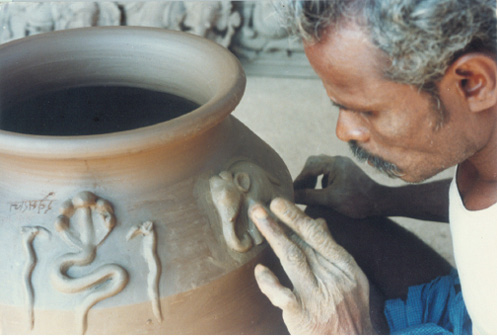
In The Arts of India by G.C.M. Birdwood, he cites the nineteenth chapter of the second section (‘Ayodhyakanda’) of the Ramayana, to list the inhabitants of the city that are represented in the procession with Bharata to seek Rama. They are the trade guilds of artisans: the jewellers, potters, ivory-workers, perfumers, goldsmiths, weavers, carpenters, braziers, painters, musical instrument makers, armourers, curriers, blacksmiths, coppersmiths, makers of figures, cutters of crystals, glassmakers, inlayers and others. In present-day India we can formulate broad groupings of major practitioners of craft as potters, weavers, metal-smiths, wood-carvers, cane and bamboo weavers and stone carvers. While these may be the larger skills, there are many other crafts from shola pith work, papier-mâché, innumerable styles of mural, miniature and floor painting, paper crafts, glass work, and carpet and duree weaving. In the area of textiles India undoubtedly has the largest range of skills that can be found anywhere in the world. While separating the craft of making floor coverings out of rags and yarn, we are left with textiles that consist of ornamentation through pre-loom processes, plain weaving, patterned weaving in which the ornamentation appears during the weaving process, and post-loom ornamentation. The last of these can be further subdivided into embroidery, beadwork, block printing and tie-and dye techniques,
and zari (metallic thread) work, offering a further array of skills that express themselves differently from one region to another.
Empowerment of Women Artisans
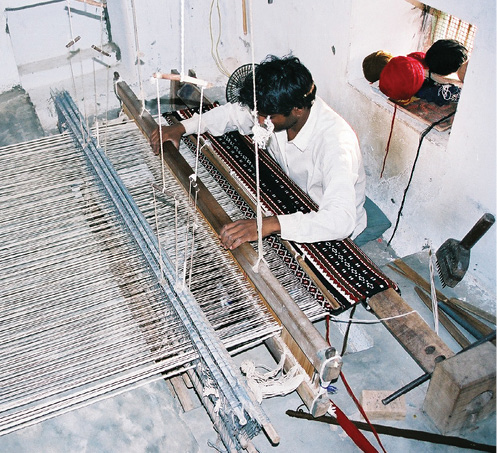
Traditional potter (above) and weaver (below) at work
In Bhadohi District of Uttar Pradesh hundreds of women took up carpet weaving since young boys went to school after the anti-child-labour campaign came into effect. Sometimes four or five women weave a carpet together under uncomfortable conditions, earning a meagre Rs 1500 per carpet collectively. For women-headed households the burden of bringing up children and staying alive under such conditions can hardly be imagined. During a visit to some carpet producing villages it was found that these women, as a part of tradition and custom, weave baskets with local moonj grass to serve as containers for sweets, saris, jewellery, fruit and other items on ceremonial family occasions. The brightly dyed grass of moonj is woven into small and large baskets with intricate designs depending on the creativity and mood of the maker. With some minor suggestions regarding colour, size and costing, the women were encouraged to bring a collection of these baskets from every home and sell them at Dilli Haat in New Delhi. What began as a shy and hesitant venture ended in delight as the women sold out their stock earning Rs 17,000 in the process. They described their experience as one of independence, for they had control of the raw material (free grass from the fields), control over production (home- and leisure-based work), control over creativity (they design each basket as they wish), and control over sales (they had sold the items at the stall themselves). The earnings were free of the male/malik control prevalent in the carpet industry and were entirely based on their own efforts. After some design workshops were held in the villages and the produce exhibited at different places, they were able to sell more than six lakh rupees worth of baskets in one year. Perhaps this is the closest example of what empowerment actually means when translated from abstract jargon into reality.
Women weaving baskets with local moonj grass, Bhadohi, Uttar Pradesh
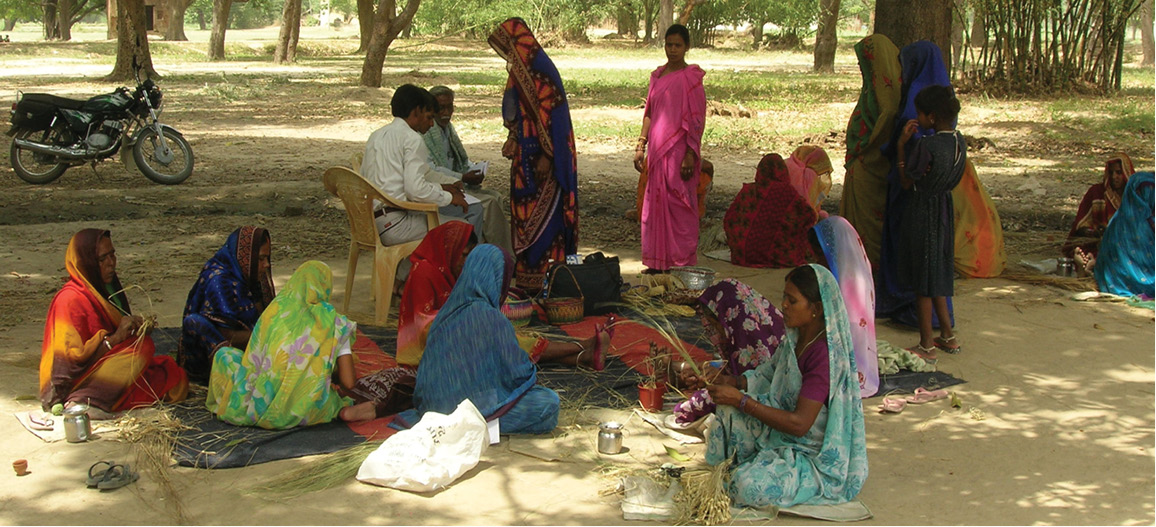
But, there is still a lot of work to be done such as organising the women into self-help groups, encouraging savings and delivering micro credit to them so that they have money for raw material, transportation and other needs.
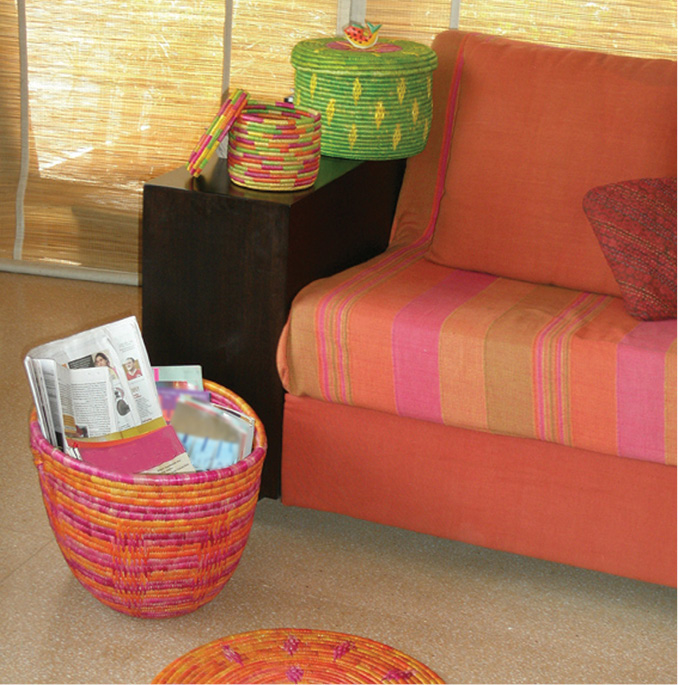
Baskets, mats, coasters designed for everyday use

There are many issues and areas of work involved in this story: child labour, women’s work, the skill of basket making, designing new baskets, finding new uses for these baskets, calculating the cost of each basket so that they fetch a fair return without making the basket too expensive, planning a marketing strategy including an exhibition, a catalogue, web marketing, learning about the benefits of a self-help group and the availability of micro credit.
EXERCISE
1. Even though craftspeople produce objects of great utility for every home, this community is often marginalised in terms of what it earns and where it lives in the village. Investigate and find reasons for this. Is this situation changing?
2. In several parts of India, women are prohibited from using the wheel to make pottery. However, in Manipur, women can also be potters. In your own area, identify the tasks done by men and women at different stages of making any craft object.
3. In India, the crafts sector is the second largest exporter. Collect data on crafts that are the most successful export items and complete the following table.
| Item | Quantity | Price | Exported to |
| Textiles |
4. In your opinion, why is basket-making, mat-weaving and making of brooms largely done by women?
5. How do market forces influence the making of a craft object? Think of a kite, a traditional paper toy, and a papier-mâché object. Consider: raw material, process, form and shape, design and decoration, the ecologically conscious buyer, the export market etc.
6. Which types of embroidery were traditionally done by men in our country and why? Find out.
7. In your opinion what are the factors that give a distinctive character to crafts in a specific region?
8. Looking at objects drawn from at least four different regions of India, made from specific material such as textile/clay, make a study of the variety found in technique, design, colour and shape. Describe in detail.